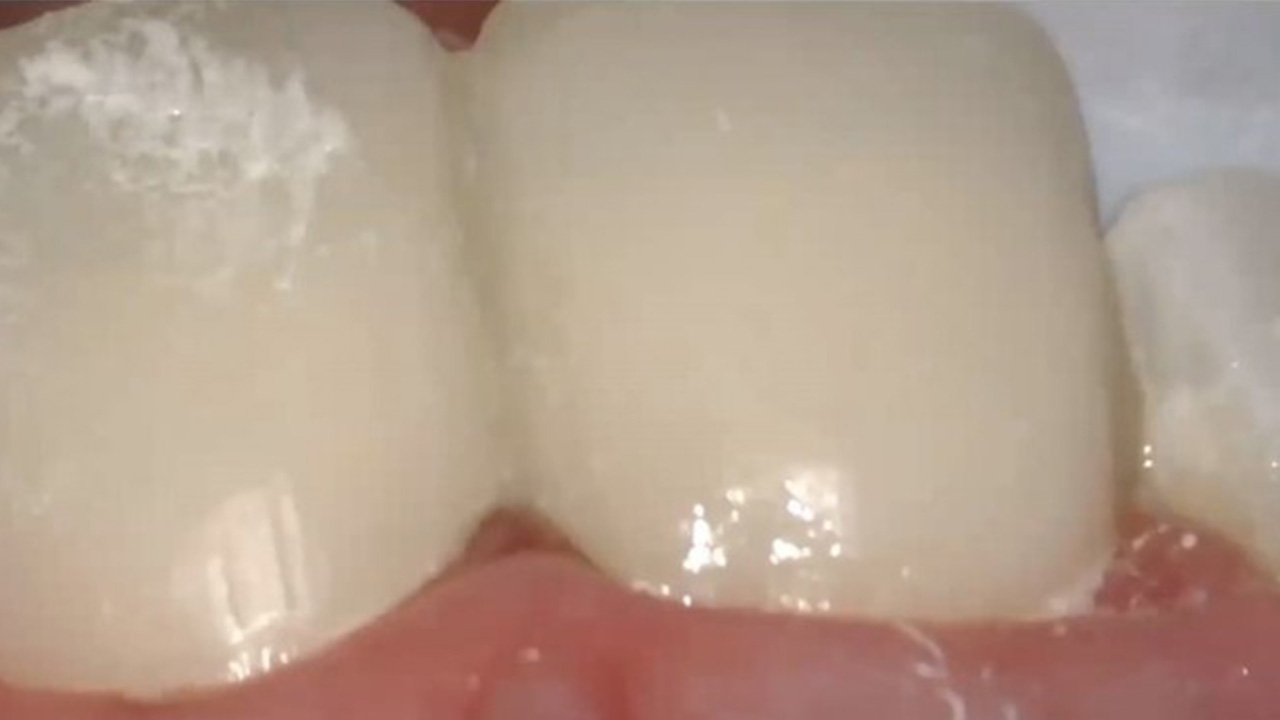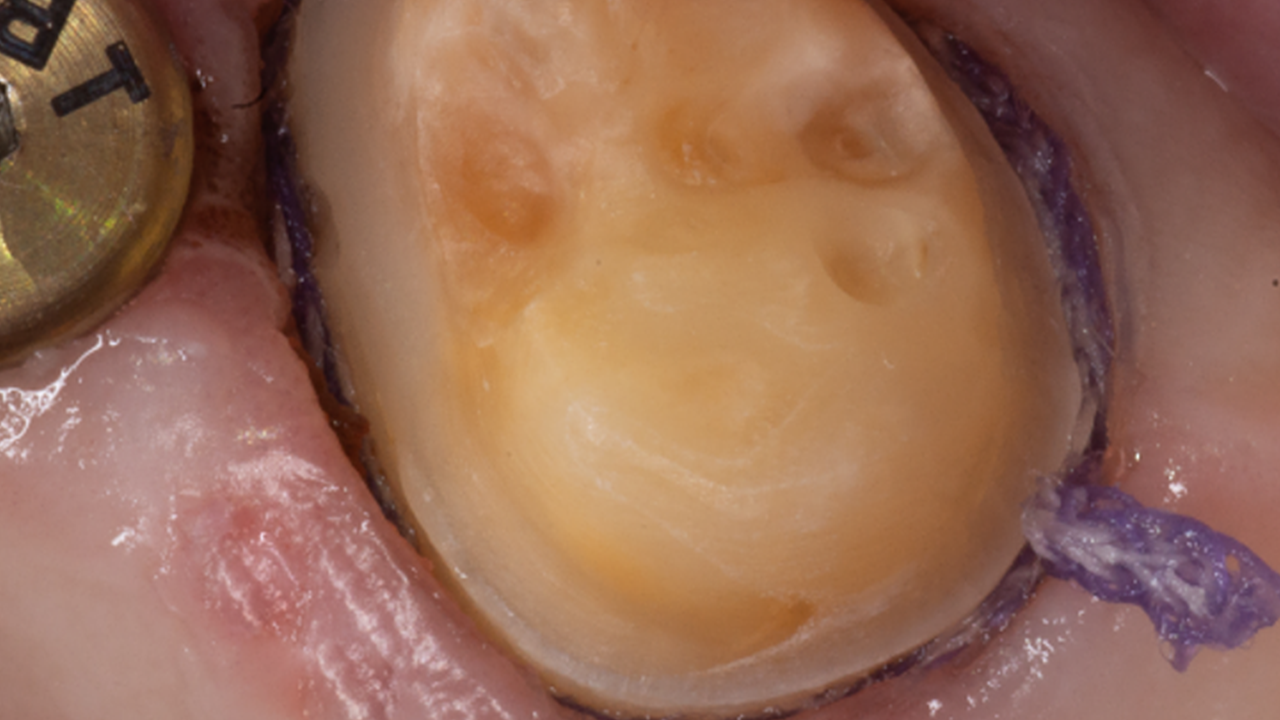Give us a call or provide your contact details below, and a Dentsply Sirona representative will be in touch soon.
Contents:
- Why Digital Impressions?
- Types of digital impressions
- Benefits of digital vs. analogue impressions
- Clinical applications for digital impressions
- Benefits for the dental office: Efficiency
- Benefits for the patient: Convenience
- Benefits for the laboratory: Convenience
Experience the benefits of digital impressions with help from Dentsply Sirona
Why digital impressions?
Over time it has become abundantly clear that the introduction of digital impressions and technological advances have changed dentistry. Here, we’ll discuss the benefits and applications of digital impressions.
Types of digital impressions
Digital impressions are developed using either a digital video technique or images. Dentsply Sirona’s CEREC Primescan® Intraoral Scanner, for example, uses a 3D-in-motion video recording to develop scans. A single lens is used, sensors capture the 3D information from different viewpoints and create a scan with high accuracy. The alternative method relies on a series of digital images, similar to photos. Light is emitted from a laser and then reflected only from the focused target area. Once this process has been repeated and all needed 2D images have been taken, the images are retrieved and stitched together to create the scan. A triangulation technique has also been used to capture and use 2D images.
Benefits of digital vs. analogue impressions
Traditionally, analogue impressions were taken and sent to the laboratory for the fabrication of single-unit crowns and other indirect restorations. Largely, elastomeric materials such as vinylpolysiloxane (VPS) are used for this purpose. These require mixing and the use of trays, and once placed intraorally must remain in place until they are fully set to properly capture and retain all the required anatomical details.
Digital impressions offer numerous benefits compared to analogue impressions. They are quicker to take and at least as accurate as analogue impressions.1,2 Other benefits of digital impressions include the following:
- The potential for early recognition of impression errors is enhanced by the ability to enlarge or otherwise manipulate areas on the screen for a closer look and, if necessary, to retake scans – or, when needed, to first correct preparation errors or deficiencies prior to the scan retake.
- Scans can be rapidly transmitted to the laboratory. That means there are no delays due to transportation and dramatically reduced opportunities for physical distortion, damage or loss of an impression during transport.
- Improved communication is a further benefit – for the dental office, patient and laboratory
- Innovations in digital impressions have also led to their use across a wide range of clinical applications.
1 Haddadi Y, Bahrami G, Isidor F, Evaluation of Operating Time and Patient Perception Using Conventional Impression Taking and Intraoral Scanning for Crown Manufacture: A Split-mouth, Randomised Clinical Study. Int J Prosthodont. 2018;31(31):55-59.
2 Carbajal Mejia JB, Wakabayashi K, Nakamura T, Yatani H. Influence of abutment tooth geometry on the accuracy of conventional and digital methods of obtaining dental impressions. J Prosthet Dent 2017.
Clinical applications for digital impressions
Digital impressions are versatile! Depending on the application, they can be used alone or in conjunction with other digital technologies for the following:
- Indirect restorations: Single-unit crowns, multi-unit restorations, veneers, inlays and onlays.
- Implantology: Planning, and fabrication of surgical guide templates, frameworks, implant abutments (Atlantis™ Dental Abutment) and implant restorations.
- Orthodontics: Evaluation, treatment planning, models, aligner therapy.
- Tooth wear: Evaluation, treatment planning, virtual mock-ups.
- Sleep apnoea: Analysis, fabrication of sleep apnoea devices (splints).
- Temporomandibular joint disorder (TMD): Temporomandibular joint (TMJ) analysis with scans, virtual articulator, mock-up of bite elevation, splint therapy.

New Patients
Initial Scan & Bite Elevation - Export into the inlab Software
Image courtesy of Dr. Bernhild Elke Stamnitz
Now, we’ll look in more detail at the efficiencies of digital impressions for the dental office and their convenience for patients and the laboratory.
Benefits for the dental office: Efficiency
The speed of acquisition and accuracy of digital scans is well-recognised. Significant time savings have been found, and it’s now possible to take a full-arch scan in less than a minute. Digital impressions improve efficiency for the office in several other ways, including:
- Improved workflow.
- Early recognition of scanning errors permits immediate scan retakes, avoiding an additional appointment for a second impression (or, in the worst case scenario, fabrication of a second crown). In addition, early recognition of preparation errors or deficiencies enables their correction prior to the scan retake.
- Quick turnaround and reduced treatment times.
- Chairside CAD/CAM integration for same day crowns.
- Greater productivity through delegation. Provided it is permissible in your state or country, a dental assistant or expanded function dental assistant (EFDA) can take scans. This frees up the dentist to perform more complex procedures.*
- Seamless acquisition and archiving of digital impressions and other digital information, without the need for physical storage.
- Streamlined communication with the laboratory.
- Improved communication with patients when discussing findings and proposed treatment, as well as treatment progress – for example, baseline and subsequent scans can be compared to measure and explain tooth movement during orthodontic treatment.
- Improved communication can help increase treatment acceptance.**
* The information provided herein does not, and is not intended to, constitute legal advice; instead, all information, content and materials are available for general informational purposes only.
** Internal international patient survey – 122 patients from USA, Germany, Switzerland, Brasil, Czech Republic, 2021 For For More Information contact Consumables-Data-Requests@dentsplysirona.com.

Image courtesy of Dr. Bernhild Elke Stamnitz
Benefits for the patient: Convenience
Factors contributing to the convenience of digital impressions for patients include the following:
- Reductions in overall chairside time.
- Reduced time needed for digital impressions and quicker turnaround time – as well as greater comfort, which patients report as reasons for preferring digital impressions over analogue impressions.
- Quick turnaround time.
- Less time spent by the office/dentist waiting to receive the laboratory-fabricated final restoration.
- The opportunity for fewer visits and therefore less travel time:
- Diagnosis, treatment planning and the start of treatment may be possible during the first visit.
- Reduced likelihood of an extra visit to address impression errors.
- With digital impressions and chairside CAD/CAM, same day crowns (and other indirect restorations) become a reality, removing the need for a provisional restoration (and for an extra visit to address a defective/lost provisional restoration). - Increased ease of communication with the dentist and dental assistant.
Benefits for the laboratory: Convenience
Digital impressions offer convenience equally for the dental laboratory. Since scans are saved digitally and rapidly transmitted as a file from the dental office, there is no need to collect or wait for analogue impressions. That means turnover time is reduced, as the crown (or other indirect restoration or a device) can be fabricated sooner and delivered sooner to the dental office. Plus, it is less likely that defective impressions will reach the laboratory in the first place than with analogue impressions. The convenience of rapid and clear communication with the dental office, which extends to the design phase, is another plus and saves time. Improved infection control is a further benefit – analogue impressions require rinsing and appropriate disinfection before being packaged and transported to laboratory. Additionally, the laboratory may take an extra step and disinfect analogue impressions to be certain this has occurred, to help protect the laboratory personnel.
With the many benefits that come with digital impressions, it’s easy to see why dental offices choose to go digital and why that equates to convenience for patients and laboratories.
Experience the benefits of digital impressions with help from Dentsply Sirona
Here at Dentsply Sirona we want to support you with products that help you take advantage of the benefits and convenience of digital impressions. With Dentsply Sirona’s CEREC Primescan® Intraoral Scanner, outstanding performance and digital impression accuracy is built in. Scanning is intuitive and accommodates hard-to-reach areas. Thanks to the 3D-in-motion video capture of information by smart pixel sensors, more data is captured in higher resolution and a full arch scan can be taken in less than one minute. Digital impressions can help you increase treatment acceptance and the CEREC Primescan® Intraoral Scanner supports a wide range of workflows, allowing you to grow your business.


Here at Dentsply Sirona, we also want to support you with our entire Online Dental Academy complete with webinars, how-to videos, and real-world examples on how to create streamlined solutions with efficient procedures and even greater patient satisfaction. Contact us now and let’s get started!
References
Gjelvold B, Chrcanovic BR, Korduner EK, aet al. Intraoral digital impression technique compared to conventional impression technique: A randomised clinical trial. J Prosthodont. 2016;25(4):282–287.
Hacker T, Heydecker G, Reissmann DR. Impact of procedures during prosthodontic treatment on patients' perceived burden. J Dent. 2015; 43(1):51/7.
Haddadi Y, Bahrami G, Isidor F, Evaluation of Operating Time and Patient Perception Using Conventional Impression Taking and Intraoral Scanning for Crown Manufacture: A Split-mouth, Randomised Clinical Study. Int J Prosthodont. 2018;31(31):55-59.
Joda T, Lenherr P, Dedem P, aet al. Time efficiency, difficulty, and operator's preference comparing digital and conventional implant impressions: A randomised controlled trial. Clin Oral Implants Res. 2016.
Yuzbasioglu E, Kurt H, Turunc R, aet al. Comparison of digital and conventional impression techniques: Evaluation of patients’ perception, treatment comfort, effectiveness and clinical outcomes. BMC Oral Health. 2014;14(10);1–7.









/videos/cq5dam.web.1280.720.png)
/images/sales-compass-images-/RES-image-SDR-flow-plus-upside-down-576x324.png)
